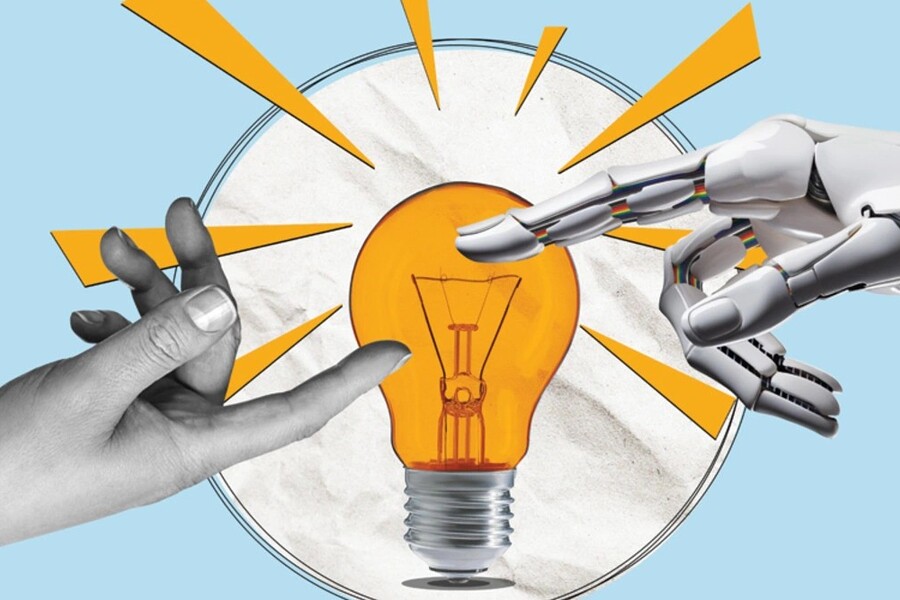As education advances, K–12 schools are increasingly turning to artificial intelligence (AI) solutions to tackle pressing challenges like teacher burnout, student engagement, and digital equity. At a recent CDW Education webinar titled “Achieving Better Student Outcomes with AI and Interactive Solutions,” industry experts from leading edtech companies such as Merlyn Mind, Newline Interactive, GoGuardian, and Acer discussed how AI is transforming K–12 education. This event, part of a series hosted by CDW Education, explored how AI-powered tools and solutions can help educators save time, personalize student learning, and streamline school operations.
Curtiss Strietelmeier, CDW’s public sector funding manager and webinar moderator, opened with a discussion of the unique demands faced by today’s educators. Mackey Pendergrast, an education strategist for district leadership at GoGuardian, highlighted one of the most common challenges: teachers are often overwhelmed with responsibilities. “Teachers don’t feel in control of their world,” Pendergrast explained, noting that the constant juggling of numerous tasks with limited support can lead to burnout. AI, he argued, can streamline many tasks, allowing teachers to focus on what matters most—building meaningful relationships with students, which is crucial for improving engagement and educational outcomes.
One notable example is GoGuardian’s AI-powered Instant Pear Deck, a tool designed to simplify lesson planning. Teachers can upload resources, select educational standards, and within minutes, the AI generates a customized lesson. According to Pendergrast, this feature can save educators up to 30 minutes of preparation time, giving them more freedom to infuse lessons with personal touches. “This could save teachers valuable time, letting them add their unique personality and energy to the curriculum,” he noted, underscoring the tool’s potential to make a significant impact on educators’ workloads.
Jennifer Mari-Wyka, senior manager of product experience at Merlyn Mind, emphasized that time is essential for teachers to build strong connections with students—a factor proven to boost student engagement and learning outcomes. She argued that AI-driven tools like GoGuardian and Merlyn Mind’s interactive solutions empower teachers to focus more on students rather than administrative tasks, facilitating a more personalized learning experience.
AI is also helping educators create more engaging, interactive environments that captivate students’ attention. SMART Technologies, another CDW partner, highlighted its SMART interactive displays, which are designed to support hands-on, dynamic learning. These displays help teachers foster deeper engagement by allowing students to interact directly with the content. “Enhancing student engagement has been a massive challenge post-pandemic,” said a SMART Technologies panelist. Tools like these, which incorporate real-time feedback and interactive elements, can help restore student focus and enthusiasm for learning in a post-pandemic world.
However, the value of AI in K–12 education extends beyond classroom settings. School administrators are finding that AI tools can streamline operational tasks and improve efficiency, especially in resource-strapped environments. From managing inquiries and automating alerts to organizing data, AI offers solutions that reduce workloads for school staff. For instance, AI chatbots can address common parent inquiries, relieving front-office staff from routine tasks and enabling them to focus on more pressing responsibilities. This not only saves time but also helps schools operate more effectively.
However, implementing AI in schools does come with challenges, particularly around privacy, ethics, and security. Protecting student data is critical, and schools need to thoroughly assess the security features of any AI tools they consider using. It’s also essential to provide AI literacy training to teachers and administrators to ensure responsible use of these technologies. “The ethical and security concerns of AI are paramount,” emphasized Strietelmeier. “Schools must develop policies that outline acceptable AI use, align with educational ethics, and remain flexible to adapt to the ever-evolving AI landscape.”
Ethics around AI use also include ensuring that AI serves as a complement, not a replacement, to human instruction. Many education experts argue that AI’s true potential lies in its ability to enhance teacher-led instruction. For example, rather than fully automating tasks, AI can assist teachers with aspects of grading, lesson planning, and assessment, allowing them to focus more on students’ needs. Building a thoughtful approach to AI integration can prevent ethical issues such as over-reliance on technology and help maintain the human element in education.
To ensure smooth AI adoption, schools are encouraged to establish clear guidelines and policies. Key steps include defining acceptable uses for AI, determining approved tools, and setting limits on student access to AI technology. By implementing these policies, schools can help safeguard ethical standards while maximizing AI’s potential benefits.
In conclusion, AI offers significant promise for enhancing K–12 education by easing teacher workloads, improving student engagement, and optimizing school operations. However, the effective use of AI in schools requires careful planning, clear policies, and ongoing reassessment. Schools that thoughtfully integrate AI into their educational frameworks can create a more efficient, engaging, and supportive learning environment for both teachers and students. As AI technology continues to evolve, K–12 institutions have a unique opportunity to leverage these tools for the betterment of education.












































Leave a Reply